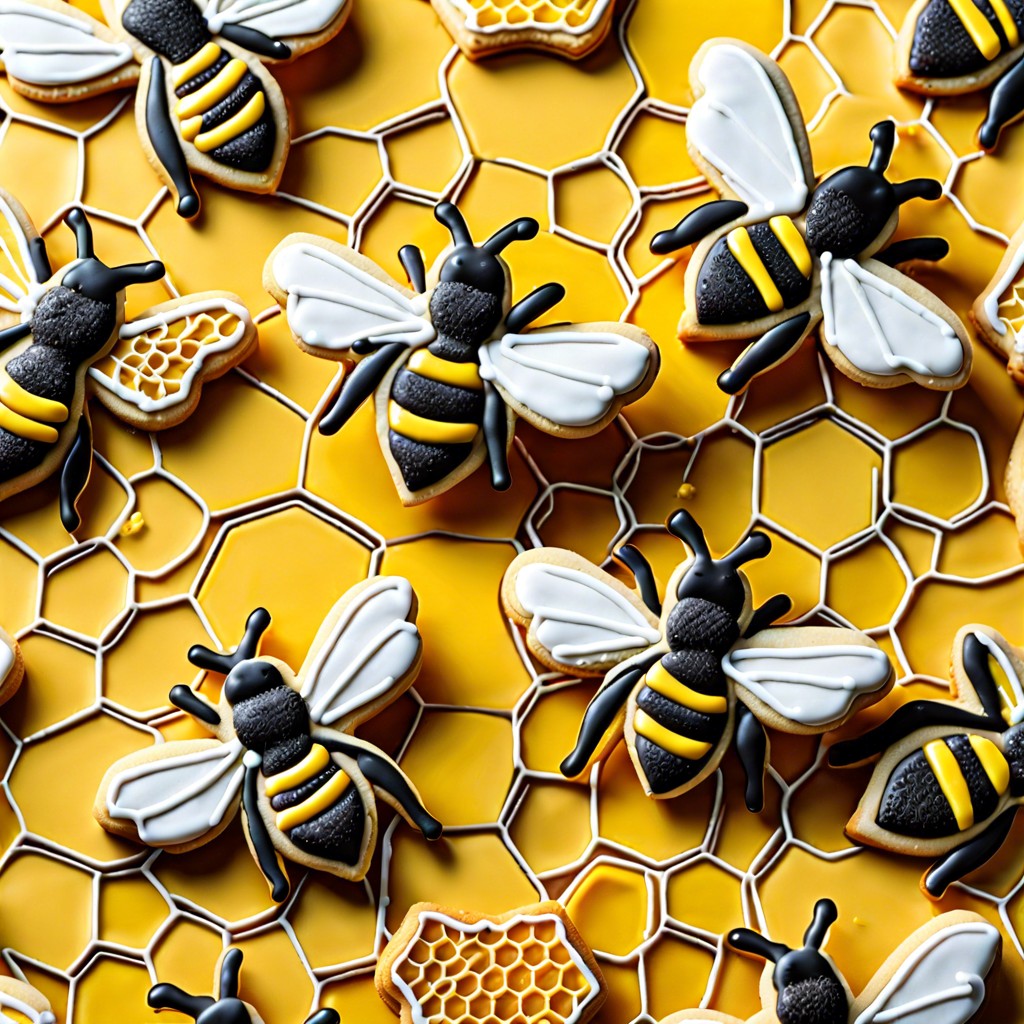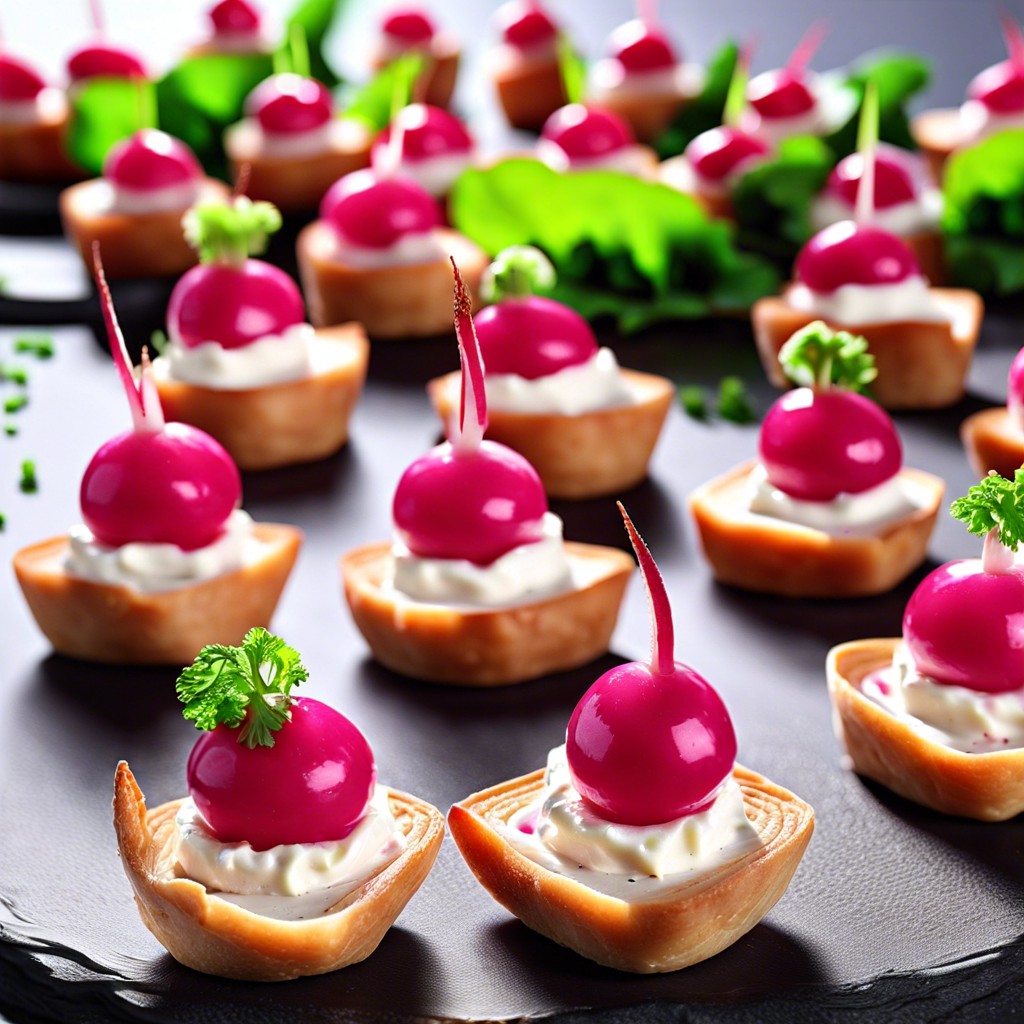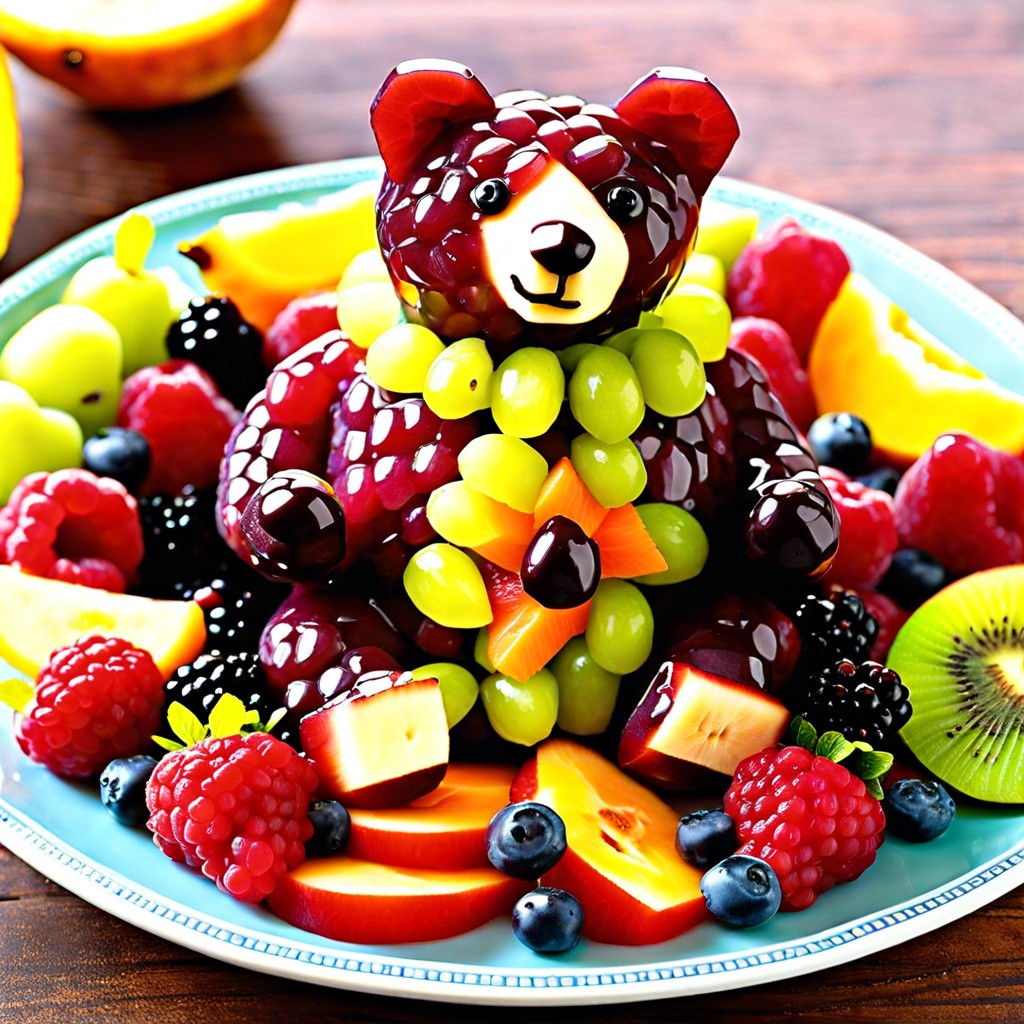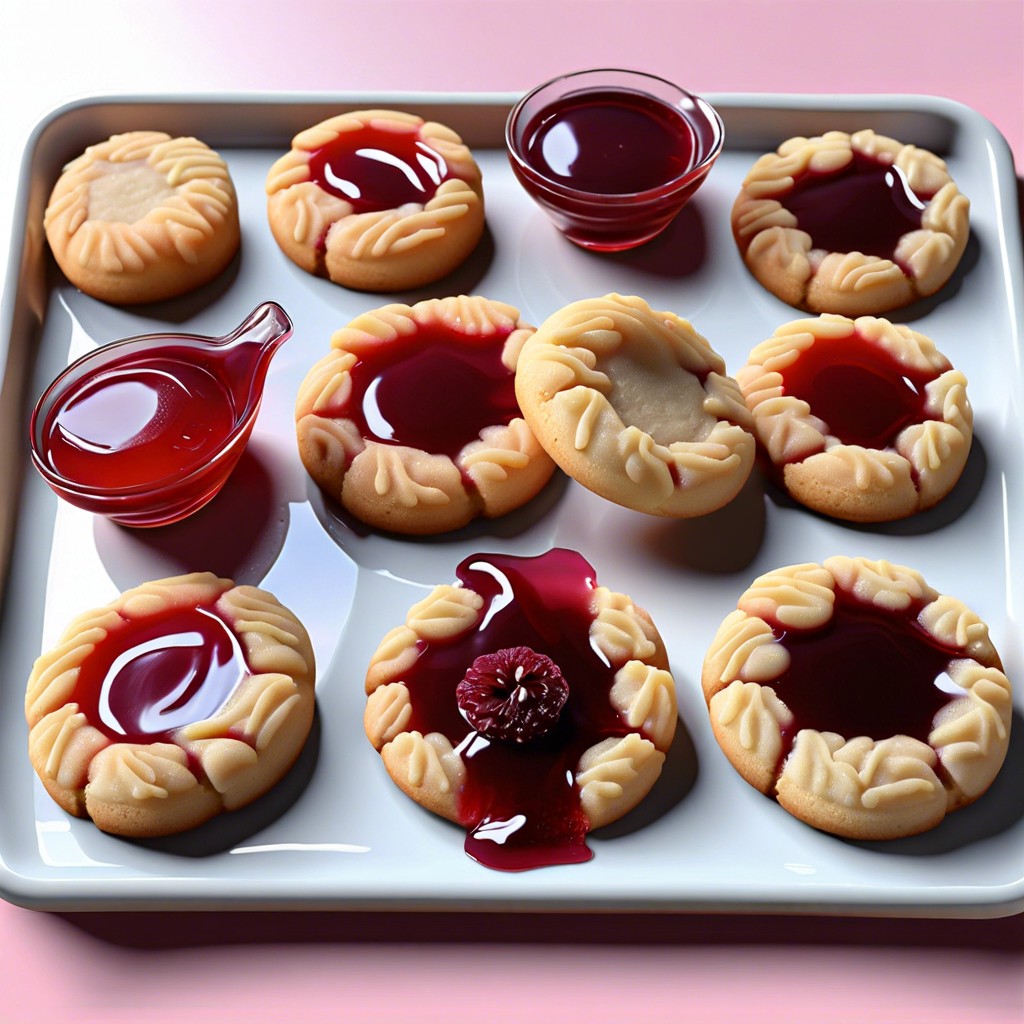A food platter typically includes a variety of items such as cheeses, cured meats, fresh fruits, vegetables, crackers or breads, dips or spreads, and nuts or olives.
Food platters are a staple at parties, events, and gatherings. They are not only visually appealing but also offer a variety of delicious options for guests to enjoy.
But have you ever wondered what goes on a food platter? With so many options available, it can be overwhelming to decide what to include. In this blog post, we will explore the different types of food that make up a perfect food platter and provide tips on how to create one that your guests will love.
Get ready to impress your guests with an irresistible spread!
Cheese Selection
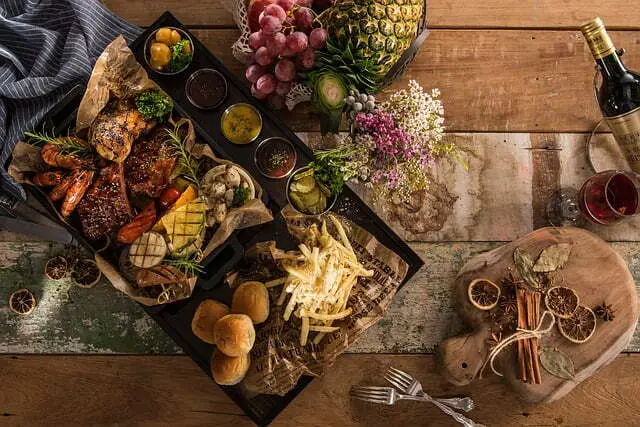
Cheese is a must-have item on any food platter. It’s versatile, delicious, and pairs well with many other foods.
When selecting cheese for your platter, it’s important to consider the variety of textures and flavors that will appeal to your guests.
Soft cheeses like brie or camembert are creamy and mild in flavor. They pair well with fruits like grapes or figs as well as crackers or bread.
Harder cheeses such as cheddar or gouda have a sharper taste and firmer texture which makes them perfect for pairing with cured meats like salami or prosciutto.
Blue cheese has a strong flavor profile that can be balanced out by sweet fruits such as pears, apples, honeycomb on the side of the board.
When choosing cheese options for your food platter try to include at least one soft option (like brie), one hard option (like cheddar), one blue-veined option (such as Roquefort) along with some unique artisanal varieties from local cheesemakers if possible.
Charcuterie Variety
A charcuterie board is an excellent addition to any food platter because it offers a variety of flavors and textures. When selecting meats for your charcuterie board, consider including different types of cured meats like prosciutto or salami.
You can also add some cooked options like roasted turkey or chicken breast.
To make your charcuterie board more interesting, try incorporating unique flavors by adding spicy chorizo or tangy bresaola. Don’t forget about the presentation! Arrange the sliced meats in an attractive pattern on your platter with some fresh herbs for garnish.
If you have vegetarian guests attending your event but still want to include something similar on your food platter then consider adding plant-based alternatives such as vegan deli slices made from seitan (wheat protein) or tempeh (fermented soybeans).
Fresh Fruit
Not only does it add color and freshness to the spread, but it also provides a healthy option for guests who may be watching their diet. When selecting fruits for your platter, consider using seasonal options such as berries in the summer or citrus fruits in the winter.
Some popular choices include sliced apples, grapes, strawberries, kiwi slices or wedges of melon. You can also mix things up by adding exotic fruits like dragonfruit or starfruit to impress your guests with something new and exciting.
To make sure that your fresh fruit stays fresh throughout the event you should wash them thoroughly before slicing them into bite-sized pieces and arranging them on a separate plate from other foods that might cause cross-contamination.
Dried Fruit
It adds natural sweetness and texture, making it a perfect complement to savory items like cheese and cured meats. Dried apricots, figs, dates, cranberries or raisins are some of the most popular options for dried fruits on a food platter.
When selecting dried fruit for your platter, consider the color contrast with other items on the board. For example, if you have dark-colored cheeses or meats on your board already then lighter colored fruits such as golden raisins would be an excellent choice.
Another thing to keep in mind when choosing dried fruit is its texture – some varieties can be quite chewy while others may be softer and more delicate. Mixing different textures will add interest to your spread.
Vegetable Crudites
They add color, texture, and nutrition to the spread. Crudites typically include raw vegetables such as carrots, celery, bell peppers, cucumbers and cherry tomatoes that are cut into bite-sized pieces for easy snacking.
When selecting vegetables for your crudite platter consider choosing a variety of colors to make it visually appealing. You can also mix in some less common veggies like radishes or jicama to add interest.
To take your vegetable crudite up a notch you can serve them with dips like hummus or ranch dressing which will complement their flavors perfectly. Alternatively try serving them with tzatziki sauce if you want something more refreshing.
Remember that presentation is key when it comes to food platters so arrange the vegetables neatly on the plate and use small bowls for dips instead of just placing them directly onto the plate.
Assorted Crackers
They provide the perfect base for cheese, dips, and spreads. When selecting crackers for your platter, it’s important to choose a variety of textures and flavors to keep things interesting.
Some popular options include water crackers, whole wheat crackers, multigrain crackers or rice cakes. You can also add some crunch with sesame seed or poppy seed crisps.
For those who prefer gluten-free options there are many alternatives available such as rice-based or nut-based varieties that offer great taste without compromising on texture.
When arranging your food platter make sure you place the assorted cracker selection in an easily accessible spot so guests can grab them quickly when they want to try out different combinations of toppings.
Remember that presentation is key! Consider stacking them in neat piles around bowls of dips and cheeses or arrange them artfully around other items on the board like fruits and vegetables for added visual appeal.
Artisan Breads
These breads are made with high-quality ingredients and traditional techniques, resulting in a unique flavor and texture that cannot be replicated by mass-produced loaves. Sourdough, ciabatta, baguette or focaccia are some popular choices for food platters.
When selecting artisan bread for your platter, consider the flavors of the other items you have chosen to include. A hearty sourdough pairs well with sharp cheeses while crusty baguettes complement soft spreads like hummus or baba ganoush.
To add an extra touch of elegance to your presentation, slice the bread into bite-sized pieces before arranging them on your board or plate. This makes it easier for guests to grab a piece without having to tear off chunks from larger loaves.
Olives and Pickles
They add a salty, tangy flavor that complements the other items on the plate. Olives come in many varieties, such as Kalamata, green olives stuffed with pimentos or garlic, and black olives.
Pickles also offer an array of options from dill to sweet to spicy.
When selecting your olives and pickles for your food platter consider their texture as well as their taste profile. For example, some people prefer crunchy pickled vegetables while others enjoy softer textures like marinated artichokes or sun-dried tomatoes.
To make sure you have enough variety for all guests’ preferences include at least two types of each olive and pickle option you choose.
Pro tip: If possible try to select locally sourced products when shopping for your ingredients; this will ensure freshness while supporting local businesses in your community.
Dips and Spreads
They add flavor, texture, and color to the spread. There are endless options when it comes to dips and spreads – from classic hummus to spicy salsa or creamy spinach dip.
When selecting dips for your food platter, consider offering a variety of flavors that complement each other. For example, pair a tangy tzatziki with a smoky baba ganoush or offer both sweet and savory options like honey mustard dip alongside roasted red pepper hummus.
In addition to traditional dips like guacamole or ranch dressing, you can also include unique homemade spreads such as pimento cheese or artichoke dip. These will impress your guests with their delicious taste while adding an element of surprise.
When arranging the dips on your food platter, place them in small bowls around the edges so they don’t take up too much space in the center of the board. You can also use colorful vegetables such as carrots or bell peppers as dippers instead of crackers for added nutrition.
Nuts and Seeds
They not only add texture and crunch but also provide a healthy source of protein, fiber, and essential nutrients. Some popular options include almonds, walnuts, cashews, pistachios as well as pumpkin seeds or sunflower seeds.
When selecting nuts for your platter consider the flavor profile you want to achieve. For example roasted almonds with sea salt can be paired with sweet fruits like grapes or figs while spicy peanuts go well with savory items like cured meats.
Seeds such as pumpkin or sunflower can be used in dips such as hummus for added texture or sprinkled on top of salads for extra crunch.
Canapés and Finger Foods
These bite-sized treats come in a variety of flavors and textures, making them an excellent addition to any spread. From savory options like mini quiches or bruschetta to sweet treats like chocolate-covered strawberries or macarons, there is something for everyone.
When selecting canapés and finger foods, consider the overall theme of your event as well as the other items on your food platter. It’s important not to overload on one type of flavor or texture; instead, aim for balance by including both sweet and savory options.
To make things easier when preparing these small bites, choose recipes that can be made ahead of time so you’re not scrambling at the last minute. And don’t forget about presentation! Arrange them neatly on a separate plate with toothpicks or skewers so guests can easily grab what they want without having to use their hands.
Seafood Options
It’s also an excellent option for guests with dietary restrictions or preferences. Some popular seafood options include smoked salmon, shrimp cocktail, crab cakes, and sushi rolls.
When selecting seafood items for your platter, it’s important to consider the freshness and quality of the products. If you’re not sure where to start or what types of fish are in season at the time of your event, consult with a local fishmonger or specialty store.
If you’re serving raw fish such as sushi rolls on your platter make sure they are prepared safely and stored properly before serving them up! You can also add some cooked options like grilled shrimp skewers that will be easy to eat without utensils.
International Cuisines
You can choose from a range of options such as Italian antipasti, Spanish tapas, or Middle Eastern mezze. These cuisines offer unique flavors and textures that will impress your guests.
For example, you could include hummus with pita bread for the Middle Eastern section of your platter or prosciutto with melon for an Italian touch. For something more exotic, try adding sushi rolls or Vietnamese spring rolls.
When selecting international cuisine items for your food platter, it’s important to consider the flavor profile and how it complements other items on the plate. Be mindful of any dietary restrictions among guests when choosing ingredients.
Including international cuisine options on your food platter is also a great conversation starter among guests who may not be familiar with certain dishes.
Vegan Alternatives
Vegan alternatives can be just as delicious and satisfying as their non-vegan counterparts. Instead of cheese, consider adding hummus or baba ganoush for a creamy dip option.
Roasted chickpeas or nuts can provide the same crunch factor that you would get from cured meats.
Fresh fruits and vegetables are already vegan-friendly but make sure to offer dips that don’t contain any dairy products like tzatziki sauce made with coconut yogurt instead of traditional Greek yogurt.
When it comes to bread and crackers, check the ingredients list carefully before purchasing them since some may contain animal-derived ingredients such as milk powder or honey.
Seasonal Ingredients
Not only do seasonal fruits and vegetables add color and flavor, but they are also more affordable and readily available during their peak season.
For example, in the summer months, you might include juicy watermelon slices or sweet strawberries on your platter. In the fall, apples and pears make for a perfect addition while winter calls for citrus fruits like oranges or grapefruits.
Incorporating seasonal ingredients not only adds variety but also allows you to showcase local produce at its best. It’s always worth checking with local farmers’ markets or grocery stores about what is currently in season before planning out your food platter.
Special Dietary Needs
Whether they have allergies or follow specific diets, you want to make sure that everyone can enjoy the spread without any worries. For those who are lactose intolerant or vegan, there are plenty of non-dairy cheese options available such as cashew cheese and almond-based spreads.
Gluten-free crackers and breads can also be included for those with gluten sensitivities.
For guests who follow a vegetarian or vegan diet, fresh fruits and vegetables should be plentiful on the platter along with dips like hummus or baba ganoush made from chickpeas instead of dairy products. Nuts and seeds provide protein alternatives while dried fruit adds natural sweetness.
If you have guests with nut allergies, it’s best to avoid including nuts in your food platter altogether as cross-contamination is always a concern when handling different types of foods.
Pro Tips for Arrangement
The presentation is just as important as the taste! Here are some pro tips for arranging a beautiful and appetizing food platter:
1. Start with a large platter or board: Choose a surface that is big enough to hold all of your items without looking overcrowded.
2. Create sections: Divide the board into different sections based on the type of food you’re serving (e.g., cheese section, fruit section).
3. Use small bowls and ramekins: These can be used for dips, spreads or olives/pickles.
4. Add height: Use cake stands or small boxes covered in decorative paper under plates/bowls/ramekins etc., this will add dimensionality and visual interest.
5. Mix colors and textures: Arrange colorful fruits next to dark cheeses; pair crunchy crackers with soft cheeses; mix fresh vegetables with dried fruits/nuts/seeds etc.
6. Pair complementary flavors together: For example sweet figs go well with salty blue cheese.
7. Garnish attractively: Sprinkle herbs over dishes, use edible flowers like nasturtiums.
Food Safety Considerations
It’s essential to ensure that the food you serve is safe for consumption and free from harmful bacteria or contaminants. Here are some tips to keep in mind:
- Wash your hands thoroughly before handling any food.
- Use separate cutting boards and utensils for raw meats, fruits, vegetables, and cheeses.
- Keep perishable items like meat, cheese or dips refrigerated until ready to serve.
- Don’t leave the platter out at room temperature for more than two hours (or one hour if it’s above 90°F outside).
- If you’re serving seafood on your platter make sure it has been cooked properly.
By following these simple guidelines, you can help prevent any potential health risks associated with consuming contaminated foods.
Pairing With Beverages
The right drink can enhance the flavors of the food and make for a more enjoyable experience. When selecting beverages to pair with your food platter, consider the type of foods you are serving and their flavor profiles.
For example, if you have selected cheeses that are rich in flavor such as brie or gouda, pairing them with red wine would be an excellent choice. If you have included spicy dips or charcuterie items on your platter, opt for beer or sparkling water to balance out the heat.
When it comes to non-alcoholic options, lemonade pairs well with fresh fruits while iced tea complements savory items like crackers and cheese.
Remember that everyone’s taste preferences differ so offer a variety of options including alcoholic drinks (if appropriate) as well as non-alcoholic ones so guests can choose what they prefer.
Cleanup Tips
Don’t let the thought of cleaning up discourage you from creating a beautiful food platter for your guests. Here are some cleanup tips that will make your life easier:
1. Use disposable plates and utensils: This will save you time and effort in washing dishes.
2. Line your platters with parchment paper or wax paper: This makes it easy to remove any leftover food without having to scrub the platters.
3. Store leftovers properly: If there are any leftovers, store them in airtight containers in the fridge as soon as possible.
4. Clean up spills immediately: Accidents happen, but cleaning them up right away can prevent stains and make cleanup easier later on.
5. Enlist help if needed: Don’t be afraid to ask for help from friends or family members who may be willing to lend a hand with cleanup duties.
By following these simple tips, you can enjoy hosting parties without worrying about post-party messes!
FAQ
What type of food is a platter?
A platter is a type of food presentation where a main dish is served on a large flat dish or plate along with one or more side dishes, such as a salad or french fries.
What are the essential components of a well-balanced food platter?
A well-balanced food platter should consist of lean protein, whole grains, healthy fats, fruits, and vegetables.
How can you create a visually appealing food platter for a party?
To create a visually appealing food platter for a party, incorporate a variety of colors, textures, and food groups while arranging them artfully and ensuring a mix of both sweet and savory elements.
What are some popular theme-based food platters for various occasions?
Some popular theme-based food platters for various occasions include seasonal fruit trays, cheese and charcuterie boards, seafood platters, and dessert spreads.
